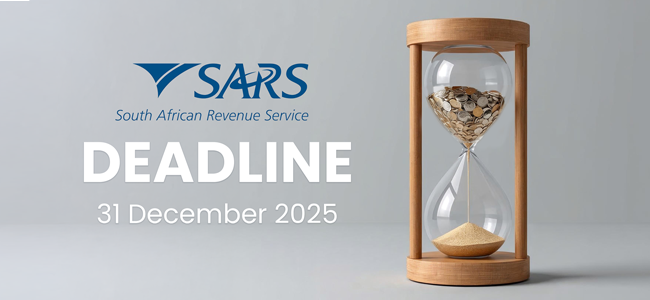Top Complaints Against SARS – And How We Help You Avoid Them
“He said that there was death and taxes, and taxes were worse, because at least death didn’t happen to you every year.” (Terry Pratchett)
In SARS jargon, a ‘systemic issue’ is the underlying cause of a complaint that affects many taxpayers. These systemic issues may have to do with the way SARS systems function, how SARS drafts and implements policies or procedures, or even how it applies or disregards legislative provisions.
Over the years, collaboration between the Office of the Tax Ombud (OTO) and SARS has reduced the number of systemic issues from more than 20 to seven.
7 systemic issues at SARS
- Delays in payment of refunds.
- Non-adherence to dispute resolution timeframes and rules under the Tax Administration Act (TAA).
- Undue hardship caused to taxpayers resulting from the way the Tax Compliance System (TCS) is designed.
- Failure to respond to requests for deferred payment arrangements within the prescribed turnaround time (21 days).
- Failure to respond to requests for a compromise within the prescribed turnaround time (90 days).
- Failure to respond to requests for a suspension of payment within the prescribed turnaround time (30 business days).
- Repeat verification for reduced assessments or for cases with the same risk and supporting documentation.
How do systemic issues affect my business?
Delayed refunds – especially VAT and diesel refunds – create massive cash flow challenges for companies, inhibiting growth and increasing the risk of business failure, especially for small businesses.
Similarly, the design of SARS’ Tax Compliance System has resulted in companies losing contracts or tenders, or not being paid by corporate or government clients. This is because the system may flag a company as non-compliant where payment arrangements or suspension of debt agreements are in place. The system also reflects non-compliance for immaterial transgressions – including, for example, minimal debt amounts such as R1 and outstanding returns or payments for which arrangements have been made with SARS; or even fraud committed by SARS or ex-SARS officials.
SARS’ non-adherence to dispute resolution timeframes and rules, and its delayed response to requests for payment arrangements, not only infringe on taxpayer’s rights, but also expose taxpayers to prolonged periods of ‘non-compliance’, despite their efforts to become compliant.
Repeat verification cases cost time and money, adding a further unnecessary compliance burden on taxpayers.
How we protect your interests
While these systemic issues are being addressed by SARS, and monitored by the Tax Ombud, SARS suggests that taxpayers rely on the expertise of a registered tax practitioner. As your SARS-registered tax practitioner, we protect your interests and rights as a taxpayer in the following ways:
- Careful compliance and excellent record-keeping are always the first line of defence when dealing with SARS – we help ensure that you have the correct processes in place to ensure both.
- Our team of tax experts can professionally and correctly represent your business in the event of a tax dispute with SARS.
- We understand the service levels and time frames outlined in the TAA and SARS’ Service Charter and we are experienced in using the official channels for complaints, including SARS’ Complaint Management Office.
- We easily recognise systemic issues and can help you escalate these challenges directly to the Tax Ombud – the quickest and most effective way to deal with most complaints relating to systemic issues.
- For other issues, after all avenues of recourse within SARS have been exhausted, we can assist your business to access the free and independent recourse offered by the OTO.
- We can advise your business on obtaining tax risk insurance protection against SARS tax audits and related disputes.
You can count on us to ensure your dealings with SARS are as efficient and cost-effective as possible!




